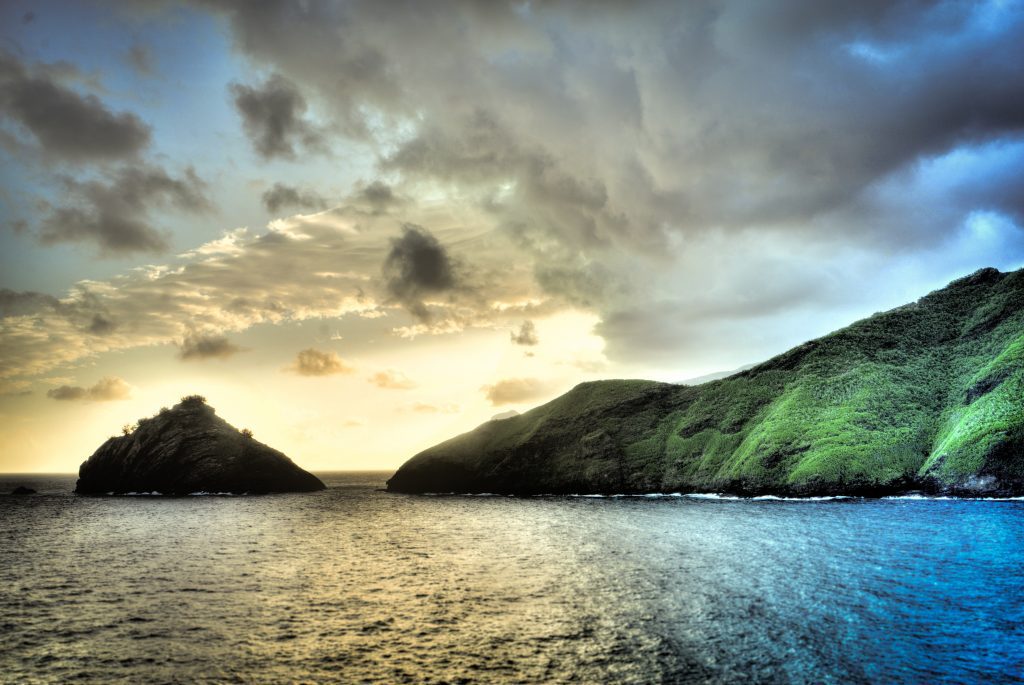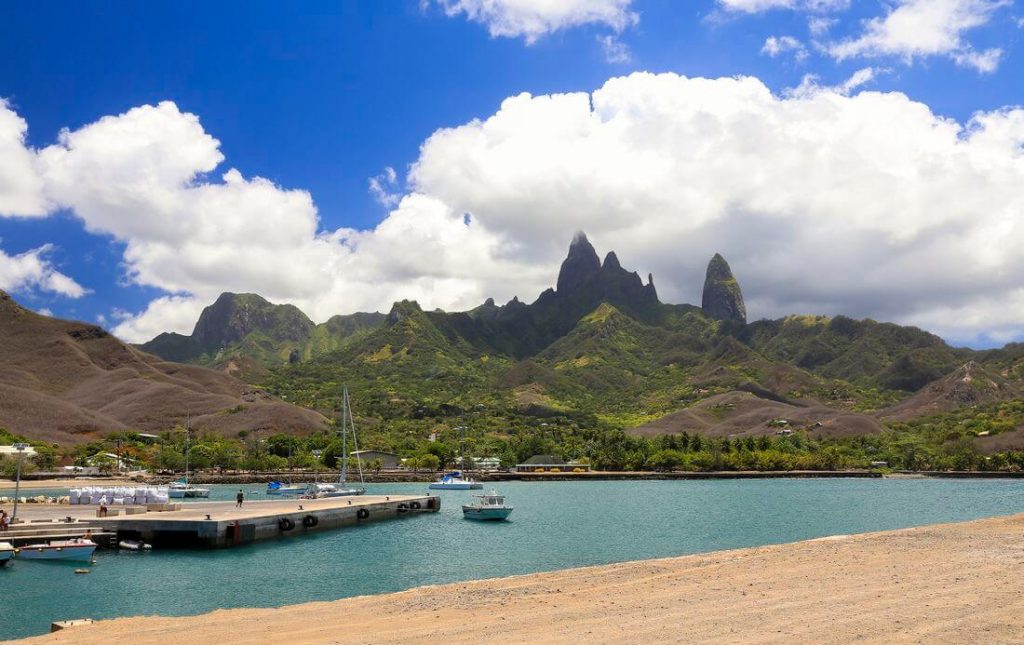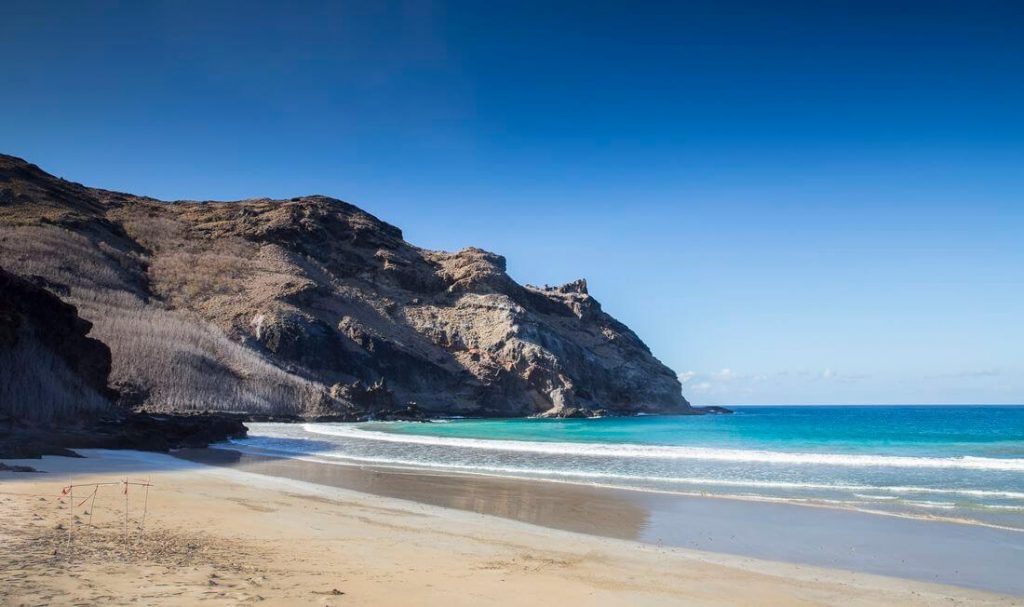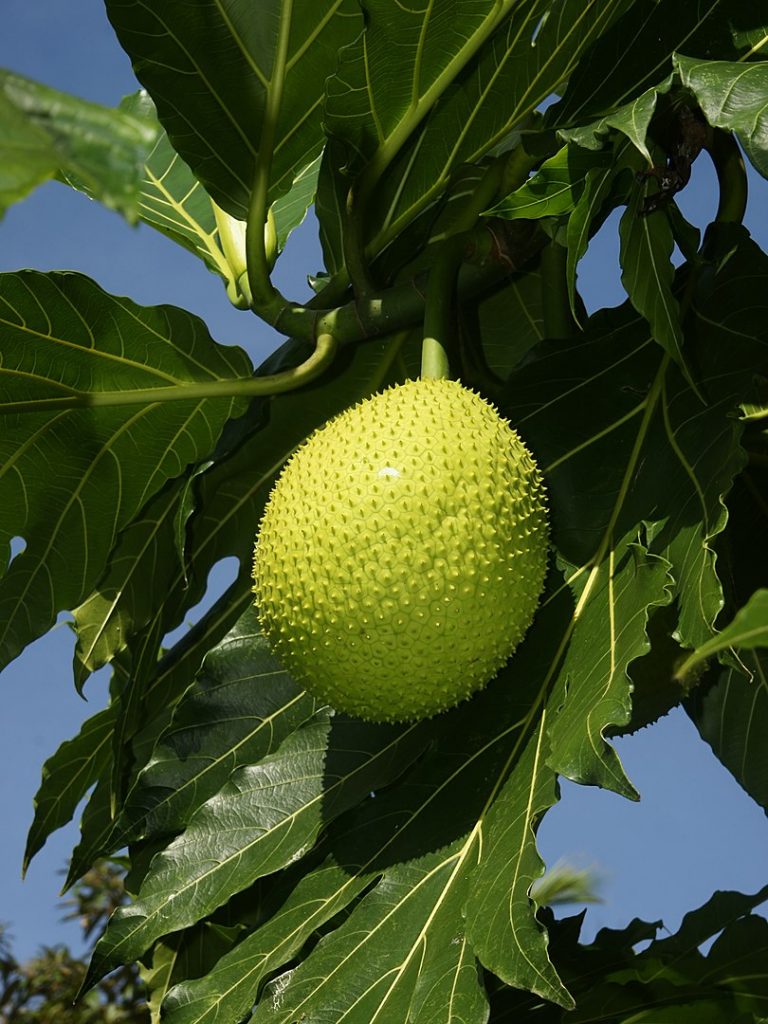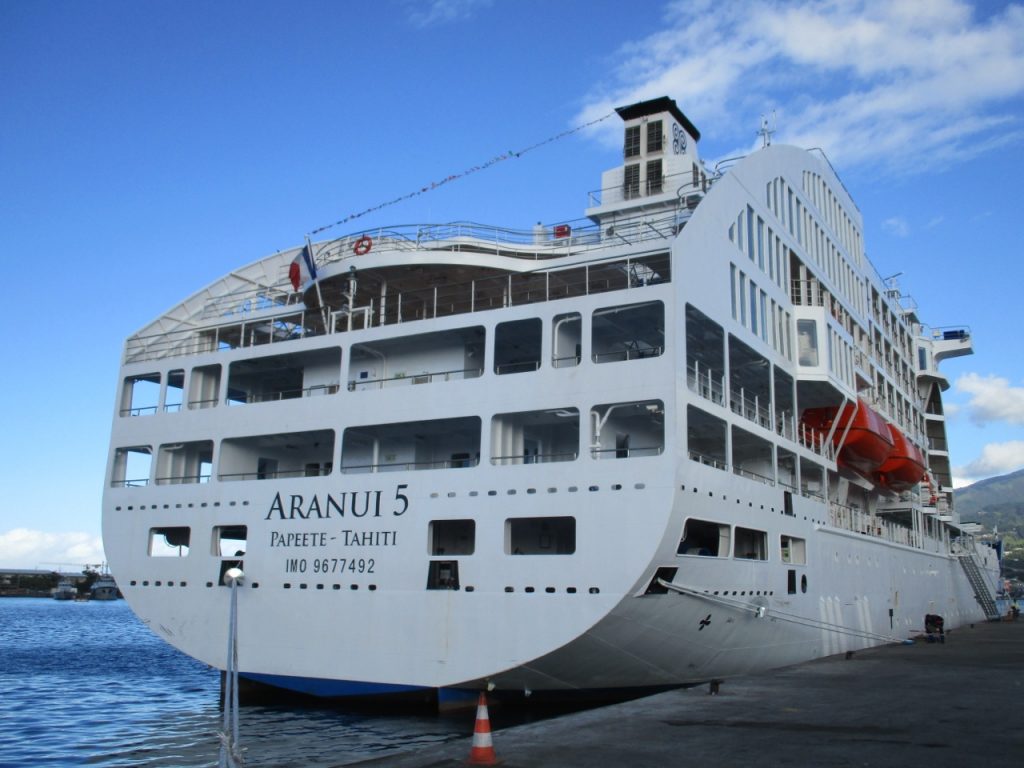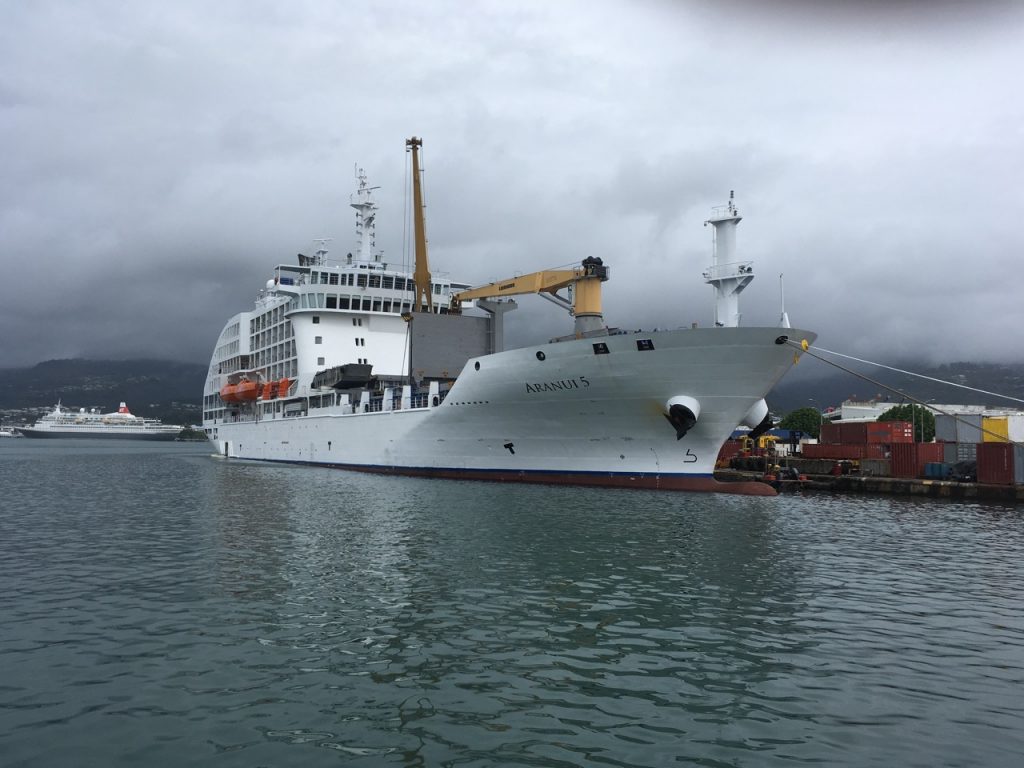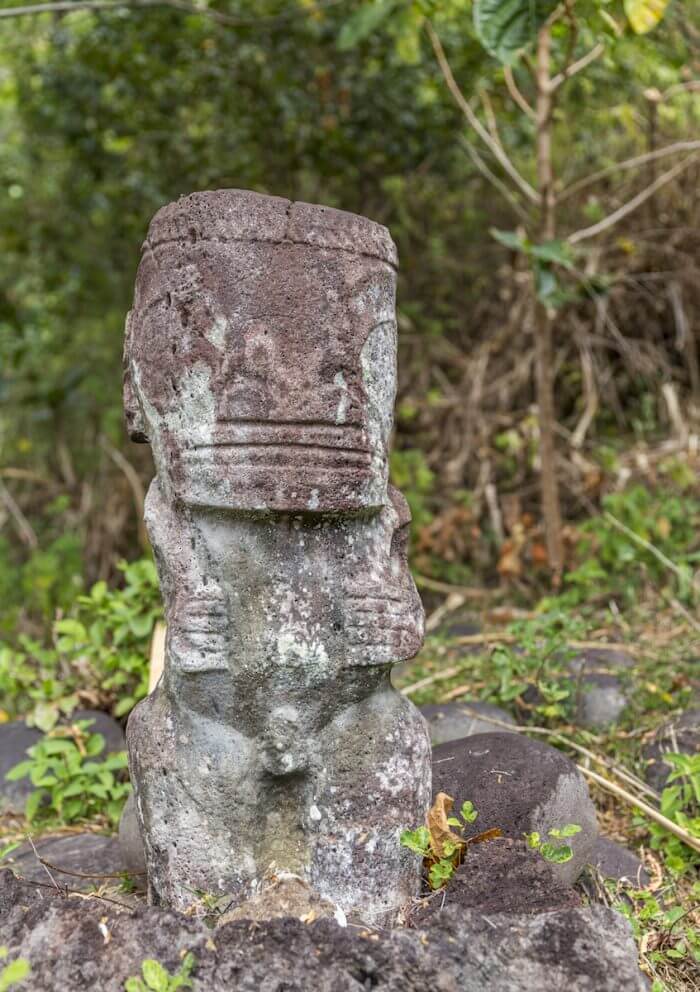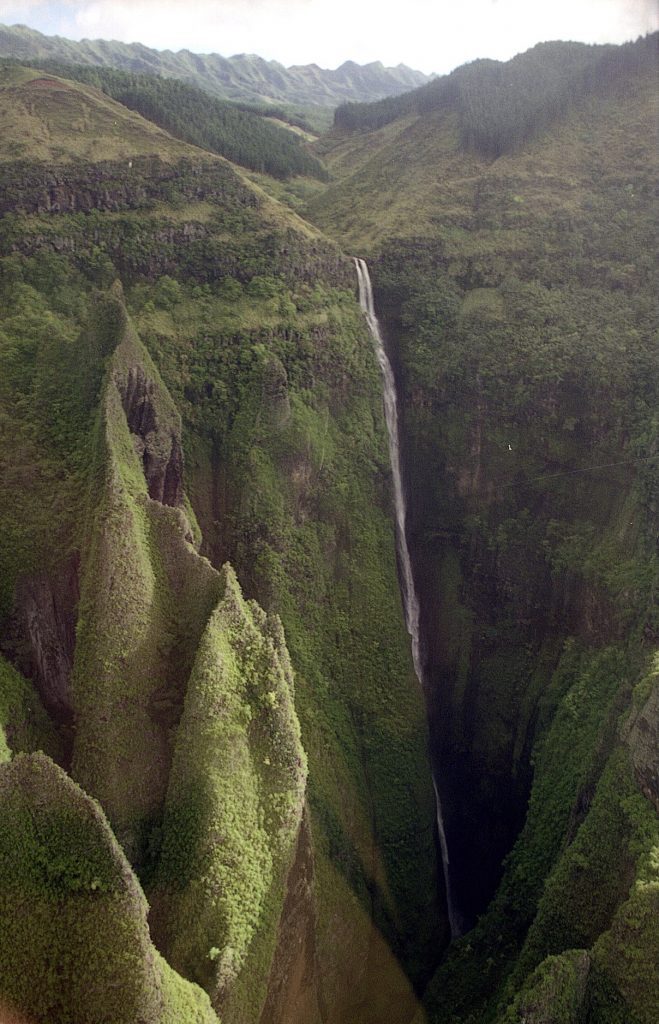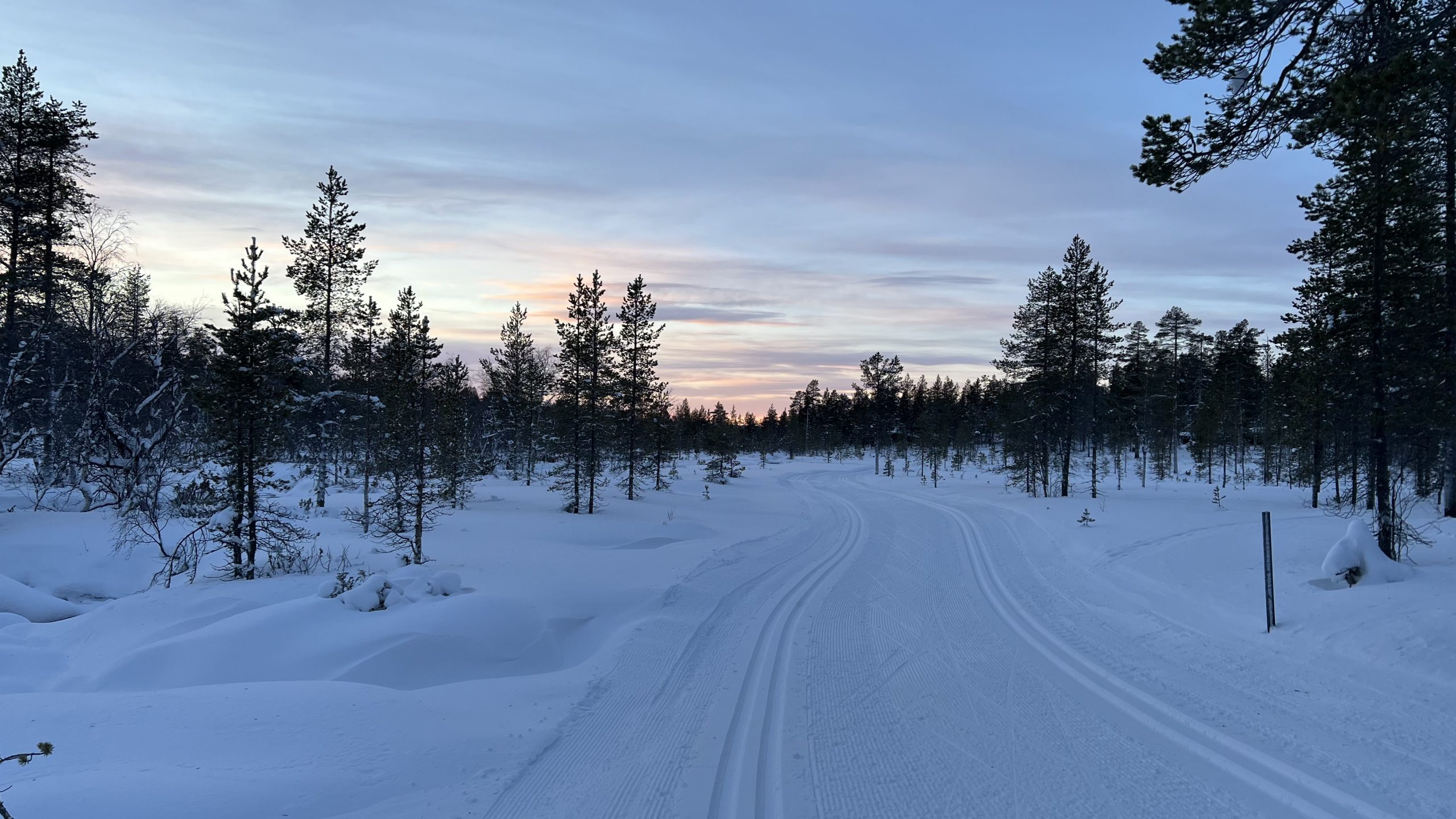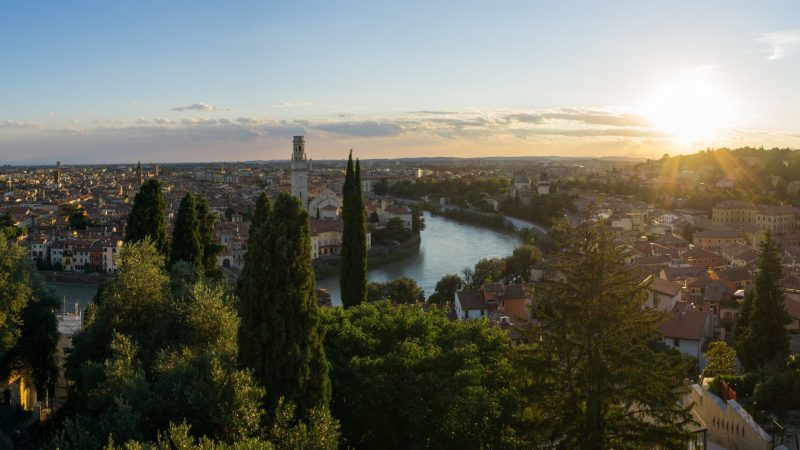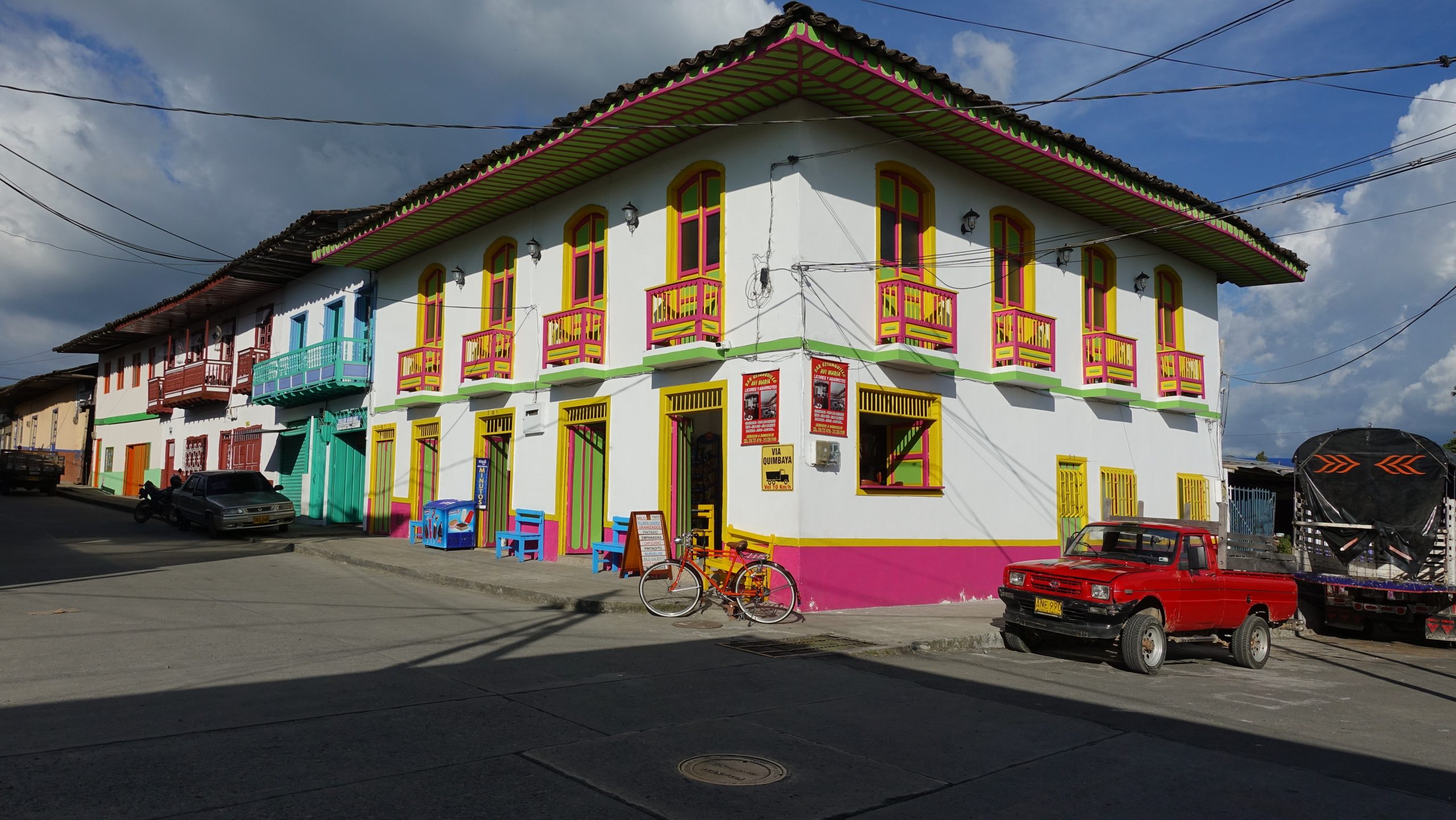Off the wind on this heading lie the Marquesas
We got 80 feet of the waterline nicely making way
Perhaps you know these lyrics from the famous Crosby, Stills and Nash song Southern Cross, but did you know that they refer to a beautiful and remote South Pacific archipelago?
These islands have more to offer than just their remoteness, however…read on to find out more!
The Marquesas will appeal to:
- Nature lovers
- Solitude seekers
- Culture buffs
- Fans of the arts and handicrafts
- Hikers
- Horseback riding enthusiasts
- Beach lovers
The Basics
The Marquesas are part of French Polynesia, a semi-autonomous French overseas collectivity consisting of six archipelagos in total. These islands are not just remote, but in fact one of the most remote inhabited island chains in the world. The nearest continental land mass (Mexico) is a whopping 4,800 km away!
The largest and most populous island is Nuku Hiva, followed closely by Ua Pou and Hiva Oa. The remaining populated islands are Ua Huka, Tahuata and Fatu-Hiva, while six others are uninhabited. Given their latitude, a little over 9 degrees south of the Equator, the Marquesas are of course tropical with a fairly steady year-round temperature and alternating wet/dry seasons. However, their location relative to the prevailing easterly winds and the dry (atmospherically speaking) Humboldt current mean that compared to the rest of French Polynesia they are actually rather dry.
The Marquesas are volcanic in origin, and quite rugged. Each of the islands is unique in some way, whether in climate, landscape or history. The scenery is dramatic, with waterfalls plunging into deep valleys and mountains jutting up from the sea. And let’s not forget the inviting and uncrowded black, white and golden sand beaches!
The islands are sparsely populated with less than 10,000 total residents. This wasn’t always the case, however; prior to the arrival of European explorers the islands’ population is estimated to have been over 100,000. Disease and (to a lesser extent) warfare decimated the islanders so dramatically that by 1926 the Marquesas were home to just 2,255 indigenous residents, the worst loss of life suffered by any Polynesian island group.
Despite their isolation, the islands have attracted a surprising number of well-known artistic figures. French artist Paul Gauguin spent the last ten years of his life on Hiva Oa, and Belgian musician Jacques Brel also spent several years on the same island. Both are buried there. American author Herman Melville’s (Moby Dick) stay on Nuku Hiva in the 1840’s inspired his first novel, Typee, and set him on the course to write his most famous work. And finally, Scottish author Robert Louis Stevenson and Kon-Tiki expedition leader Thor Heyerdahl of Norway also wrote books inspired by their time spent in the islands.
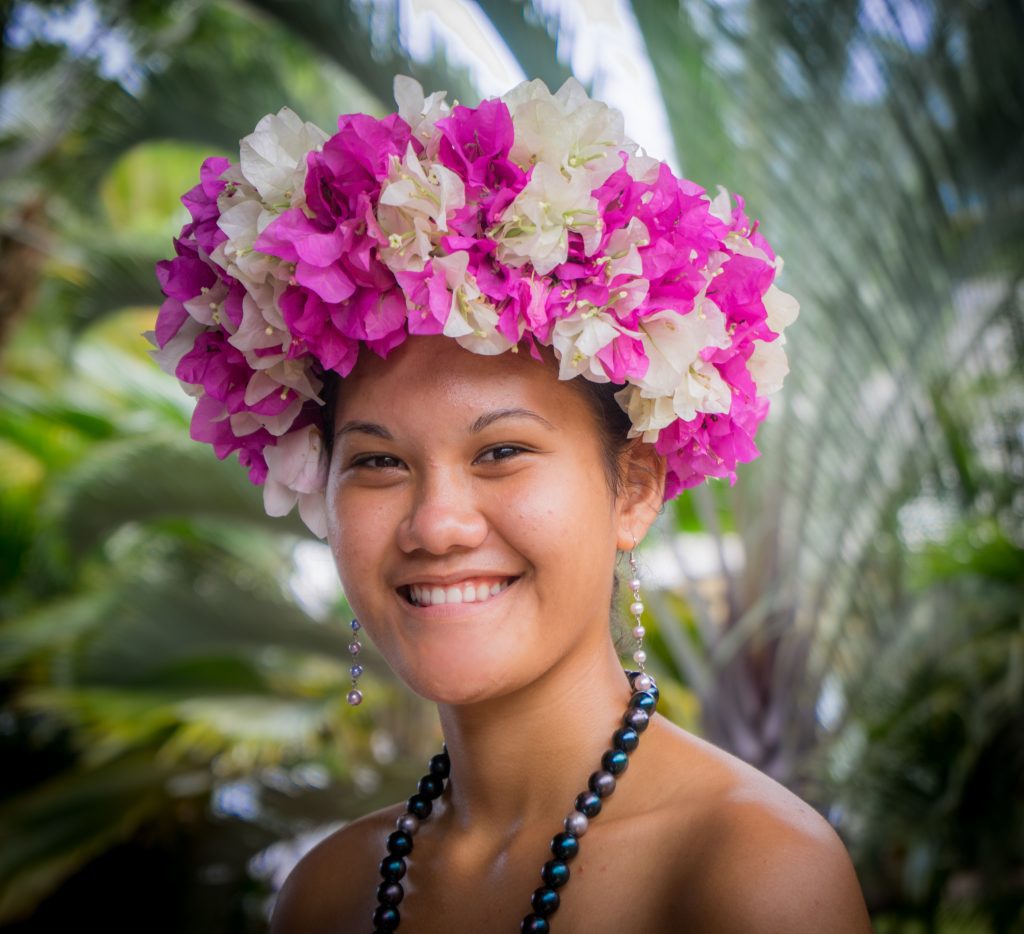
Despite some common cultural history with the rest of the Polynesian islands, the Marquesas have a distinct culture of their own. In fact, they were the first islands to be settled by the Polynesians, who came from Samoa and later settled Tahiti, Hawaii, etc. Their handicrafts, music, dance, and wood or stone Tiki statues are known worldwide. And did you know that tattoos originated in the Marquesas as well?
Getting to the Marquesas is possible either by flight from Papeete (Tahiti) or by boat. There are no ferries to the islands, however, so the only practical way to reach them by water is with a private yacht or a cruise (more on that later).
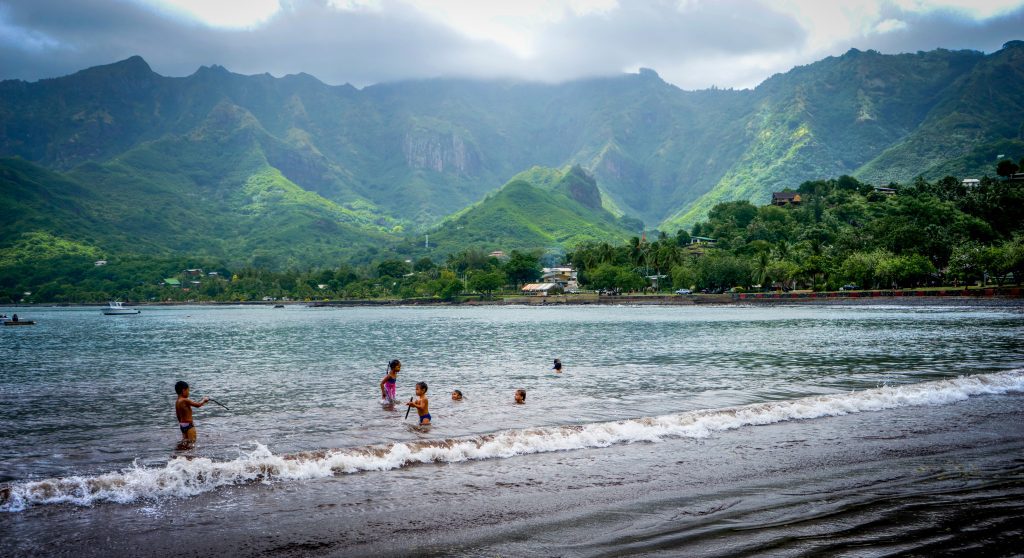
Sustainability
In comparison to the Society Islands (which include Tahiti, Bora Bora and Moorea), the extremely small scale of tourism in the Marquesas helps to ensure a good degree of sustainability in the environmental sense. I think it’s fantastic that so many lodgings and restaurants are locally owned and operated, and that there is no mass tourism whatsoever!
There are a few higher-end hotels on the islands, but the most popular lodging is a ‘pension’. Pensions are guesthouses operated by local residents, with rooms generally located next to or within their homes. They typically offer home-cooked breakfast and dinner as well. Not only does this type of lodging provide a much more immersive experience, it generally costs a good bit less than a hotel!
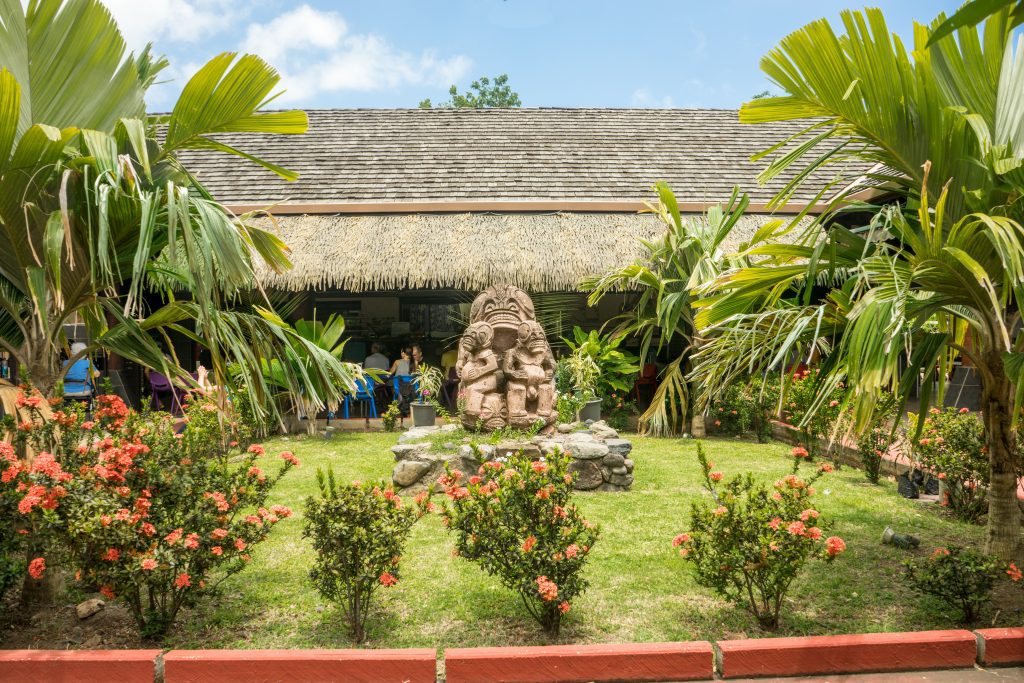
Getting there is definitely the most environmentally unfriendly part of visiting the Marquesas, but there are a few ways to mitigate this impact. Perhaps it’s easiest to put it in terms of how I would (and hopefully will one day soon!) plan my own travel to the islands. Basically, I’d try to (1) take the fewest and most direct flights possible, (2) offset the flight emissions, (3) pack lightly, and (4) once there, stay as long as I possibly can. Because let’s face it, visiting a place like this is pretty much the trip of a lifetime, isn’t it?
The two biggest sustainability issues the islands face are overfishing (particularly tuna) and water scarcity. Water shortages are common, and as visitors we should make an effort to limit our water usage. And as far as food sustainability, it’s pretty much a universal rule that eating locally-sourced food (but watch the tuna intake!) is the smartest thing you can do…and after coming halfway around the world, it just makes sense to try the local food, anyway. Bon appetit!
Active Travel
The Marquesas are a hiker’s paradise! The mountains, valleys, waterfalls and beaches, many of them not reachable by road, offer jaw-dropping beauty around almost every corner. Just be sure your level of fitness is appropriate to the hike, and keep in mind that outside the main villages it isn’t always possible to buy food or drink, so if you’re going on a more remote hike be sure to bring plenty of water and snacks along. For some hikes a guide is recommended, since trails are not always well marked or maintained. Oh, and always have insect repellent with you wherever you go, in case there are ‘nonos’. These tiny biting flies can barely be seen or felt, but apparently leave behind a very nasty, itchy welt – enough to ruin a few days of your visit.
If your legs aren’t up to climbing but you still want to explore, horseback riding or a 4×4 vehicle tour is a great way to see some of the more isolated areas of the islands. And while the Marquesas do not have coral reefs like most other French Polynesian island chains, the waters surrounding them are teeming with all sorts of sea life, and there are several caves that even novice divers can enter.
Mountain biking is also possible on several of the islands. From my research Hiva Oa seems to have the most trails, and bike rentals are available. Just keep the rugged terrain of these islands in mind, and be sure that the planned route matches your experience and level of fitness.
Culinary Travel
Marquesan cuisine is similar to that in the rest of Polynesia. Fish and seafood both feature prominently, as well as different meats, root vegetables and of course exotic fruits. Poisson cru (raw tuna “cooked” in lime juice and served in coconut milk) is popular throughout French Polynesia, and breadfruit is commonly used as a staple given its starchy content – it’s similar to potatoes in both taste and consistency.
Feasts often involve the use of an underground oven, called ‘umu’ in the local language. It’s a cooking method also used throughout the Polynesian islands, including Hawaii where it is called ‘luau’. A few of you might have heard of that. 😊
Some culinary treats are unique to these islands, however. One of them is the prevalence of goat meat. The reason why is simple: the mountainous terrain provides ideal conditions for raising them. If you’re a meat eater, maybe give it a try!
My research did not uncover any specific culinary tours or cooking courses on offer, but I have a feeling that a quick request to your pension host would be answered immediately and to your satisfaction. Hospitality in these islands is a way of life, not just an obligation.
My Tips & Picks
Cruise tip: I generally don’t encourage cruise travel for sustainability reasons, but here I make an exception. The Aranui 5 is a unique dual-purpose cruise/supply ship built in 2015. It frequently sails a 12-night circuit from Papeete to all six inhabited islands of the Marquesas, to deliver supplies and pick up locally produced goods to take back to Papeete. On its way to/from the Marquesas it also visits a few other islands in French Polynesia, such as Rangiroa and Bora Bora. The ship carries about 230 passengers, the onboard atmosphere is casual and unless you’ve got your own yacht it is hands down the best way to visit all the inhabited islands of the archipelago in a relatively short time. For some travelers this is ideal. However, port calls last a day at most, usually more like a half-day, the timing of everything is tightly organized and excursions are always done in groups. If you prefer independence and flexibility, it may not be your cup of tea.
Information tip: Sylvain and Mélanie at travel/photography blog Les Deux Pieds Dehors are a French couple living in French Polynesia, and they offer some very useful information about the Marquesas and other French Polynesian islands in both French and English. They were also kind enough to allow me to use a few of their fantastic photographs in this post. Thank you, Sylvain and Mélanie!
Planning Your Visit
If you’re in Europe, there are frequent flights to Papeete from Paris. Note that all flights must make a stop, usually somewhere in the USA. Keep this in mind, and allow yourself time to rest and recuperate after the long flight and time change.
If you’re coming from North America it’s a bit easier, with nonstop flights to Papeete from Los Angeles, San Francisco and Honolulu.
From Papeete, if you take the Aranui 5 or another cruise (cruise lines such as Paul Gauguin and National Geographic Expeditions occasionally have itineraries to the Marquesas) you’re already at your starting point! Otherwise, you’ll need to hop another flight to either Atuona (Hiva Oa) or Nuku Hiva.
If you are planning to combine a visit to the Marquesas together with other islands in French Polynesia that also involve a flight, have a look at Air Tahiti’s Passes. Once again, Sylvain and Mélanie over at Les Deux Pieds Dehors put together a fantastic summary of information about the passes, available here. There are, however, plenty of islands (Moorea, for example) which can be reached by boat from Papeete, and there are also several inter-island ferries in the Leeward Islands (where Bora Bora is located). If time allows I would recommend choosing this climate-friendlier (not to mention prettier!) option.
When to go: this is tough to say, as there really isn’t a bad time to visit the Marquesas. The time of year with the least rain is September through December, but the difference to other months is not extreme, and even these patterns have been changing in recent years. The best timing also depends upon whether you plan to visit the Society Islands or any other French Polynesian archipelago as well, since their climates are different. Overall, if your timing is flexible and you’re looking for the ideal month to visit both Society Islands and Marquesas, September is probably your best choice with August as a close second.
I’ve really just scratched the surface of what these islands have to offer but I hope you’ve enjoyed reading!



